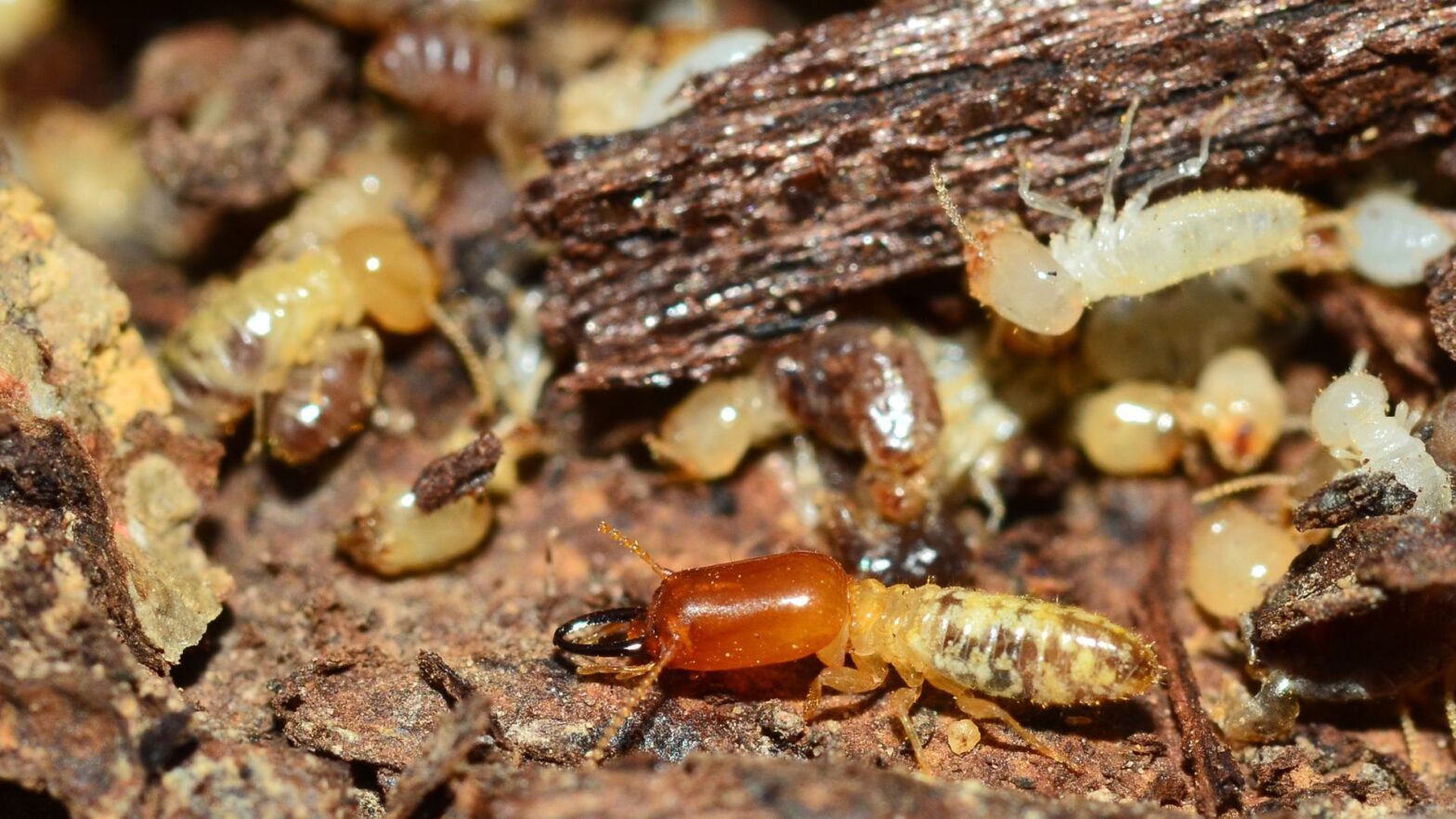Termites are silent destroyers. They chew through wood, flooring, and even wallpaper—often without being noticed for months. That’s why every homeowner should learn how to know if you have termites before they cause serious damage.
In this post, you’ll learn the key signs of a termite problem, the areas of your home they target, and the exact steps to take if you suspect they’ve moved in. Acting early makes all the difference, and this guide will help you stay one step ahead.
Table of Contents
ToggleWhy You Need to Catch Termites Early
Termite colonies grow quickly. Once they’ve settled into your home, they don’t stop eating. Subterranean termites, for example, can tunnel through walls and foundations unnoticed, and drywood termites burrow deep inside furniture or framing. The cost of repairs can be overwhelming.
Learning how to know if you have termites gives you the chance to stop them before they do real harm. Early detection means faster treatment, fewer repairs, and a safer home.

Clear Signs You Might Have Termites
Termites aren’t easy to spot, but they do leave behind some obvious clues. Here are the most common signs, with details to help you decide if it’s time to call a pest professional.
Hollow Wood When Tapped
-
If you tap on wooden surfaces like beams, floors, or walls and they sound hollow or feel soft, termites might be eating away the wood from the inside. This happens because they consume the inner parts of the wood, leaving behind just a thin outer shell.
Mud Tubes Along Walls or Foundations
-
Subterranean termites build small, narrow mud tubes to travel between their nest in the soil and the wood they’re feeding on. You’ll usually find these pencil-sized tubes on foundation walls, around plumbing access points, or in crawl spaces. They protect termites from dry air and predators.
Discarded Wings Near Windows or Doors
-
Swarmers, the flying termites that leave the colony to start new ones, shed their wings shortly after landing. If you see small piles of clear or light-brown wings on window sills, baseboards, or light fixtures, you may be dealing with an infestation that’s just getting started.
Tiny Piles of Frass (Termite Droppings)
-
Drywood termites leave behind frass, which are small, sand-like droppings. These often collect beneath furniture, baseboards, or window frames. Unlike sawdust, frass is a clear sign of active termites hollowing out wood from within.
Peeling Paint or Bubbling Surfaces on Walls
-
Moisture builds up when termites tunnel through drywall or plaster. This can cause paint to peel, blister, or bubble. It might look like water damage, but termites could be the real cause.
Stiff or Warped Windows and Doors
-
As termites feed inside door frames or window sills, they cause the wood to warp. You might notice that windows suddenly stick when opening or closing, or doors don’t shut as easily as they used to.
Soft Clicking Noises Inside the Walls
-
Some species of termites make faint clicking or tapping sounds. Soldier termites bang their heads against tunnel walls to warn the colony of danger, and worker termites are constantly chewing. If you listen closely, you may hear them inside infested walls or woodwork.
Understanding these signs is key to figuring out how to know if you have termites before the damage gets out of control.
Where Termites Like to Hide
Now that you know what to look for, let’s talk about where termites usually live. These pests are drawn to areas with moisture, darkness, and easy access to wood. Be sure to check these common termite hotspots:
-
Crawl Spaces and Basements
These dark and damp areas are a favorite entry point for subterranean termites. They often build mud tubes along the foundation or between floor joists. -
Wooden Decks, Porches, and Steps
Outdoor wooden structures that touch the soil are at high risk. Over time, even treated wood can become vulnerable, especially if it’s exposed to moisture. -
Attics and Roof Beams
Drywood termites often infest the upper parts of a home, especially if leaks or poor ventilation increase humidity levels in the attic. -
Leaky Pipes or Wet Areas
Bathrooms, laundry rooms, and kitchens often have plumbing leaks or high humidity. These moist areas attract termites looking for a water source. -
Stacks of Firewood or Mulch Near the House
Termites can start in firewood or mulch and quickly move into your home. Always store wood at least 20 feet from the structure and keep it off the ground.
Knowing how to know if you have termites also means knowing where they’re likely to show up. Regularly inspect these areas for signs of activity.
What to Do If You See Termite Signs
If you’ve noticed any of the symptoms we’ve covered, don’t wait. The longer you delay, the more extensive the damage could be. Follow these steps:
-
Do Not Disturb the Area
Spraying chemicals or tearing out wood may cause termites to scatter. That can make the infestation harder to treat and push them deeper into hidden spaces. -
Call a Licensed Pest Control Company Right Away
Termites are not a DIY job. Only a trained professional has the tools and experience to properly assess the situation and apply effective treatments. -
Schedule a Full Inspection
A pest expert will check your entire property, including places you can’t reach, like wall interiors and under slabs. They use tools like moisture meters and thermal imaging to locate hidden colonies. -
Review Treatment Options
Depending on the type and extent of the infestation, options may include liquid barrier treatments, termite baiting systems, or direct wood treatments. The technician will recommend the best plan for your home. -
Plan for Follow-Ups
One treatment may not be enough. Monitoring stations and annual inspections help catch any new activity before it becomes a problem again.
You’re already ahead by learning how to know if you have termites. The next step is acting fast before the damage gets worse.

How to Prevent Termites Long Term
Prevention is always easier and cheaper than dealing with a full-blown infestation. After treatment, or even before you notice signs, take these steps to protect your home:
-
Repair any plumbing leaks or roof issues right away to prevent moisture buildup
-
Replace damaged or rotting wood around the home’s exterior
-
Keep mulch, firewood, and tree branches away from the home’s foundation
-
Seal up cracks in the concrete foundation or siding where termites could enter
-
Use screens on vents and make sure crawl spaces stay dry and well-ventilated
-
Schedule an annual termite inspection with a licensed company
These habits will help keep termites away for good. They’re especially important once you’ve learned how to know if you have termites and don’t want them coming back.
Conclusion
Termites may be sneaky, but now you know what to look for. Learning how to know if you have termites could be the key to protecting your home from thousands of dollars in damage. From mud tubes and hollow wood to stuck windows and frass, the signs are there—you just have to know where to look.
If you’ve seen any of these red flags or just want peace of mind, we’re here to help. We offer professional inspections and proven treatments tailored to your home. Contact us today to book pest control services.


